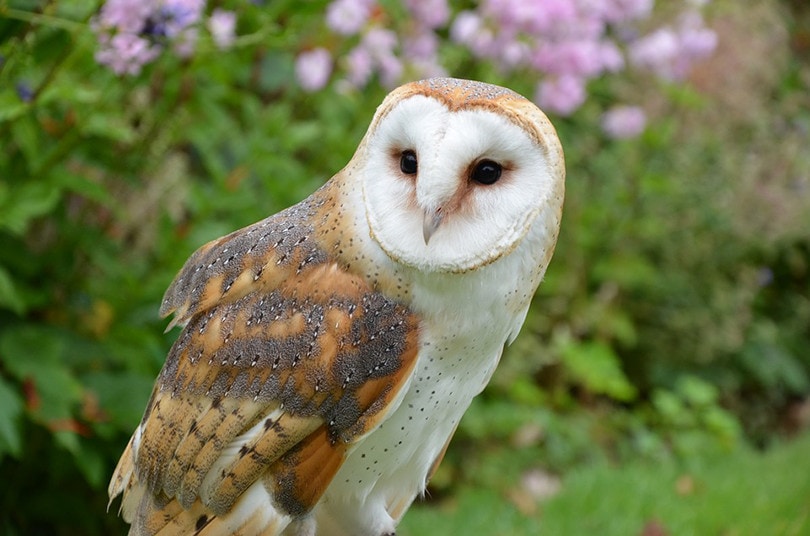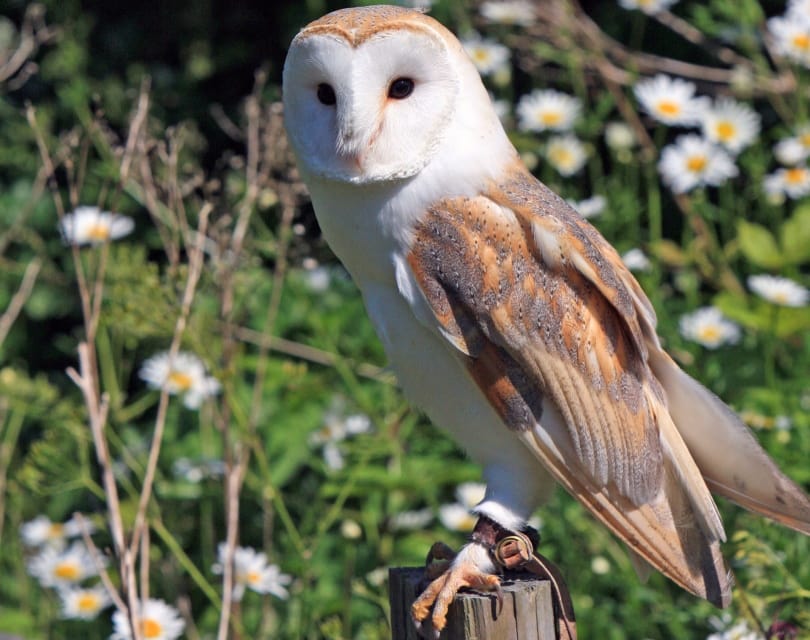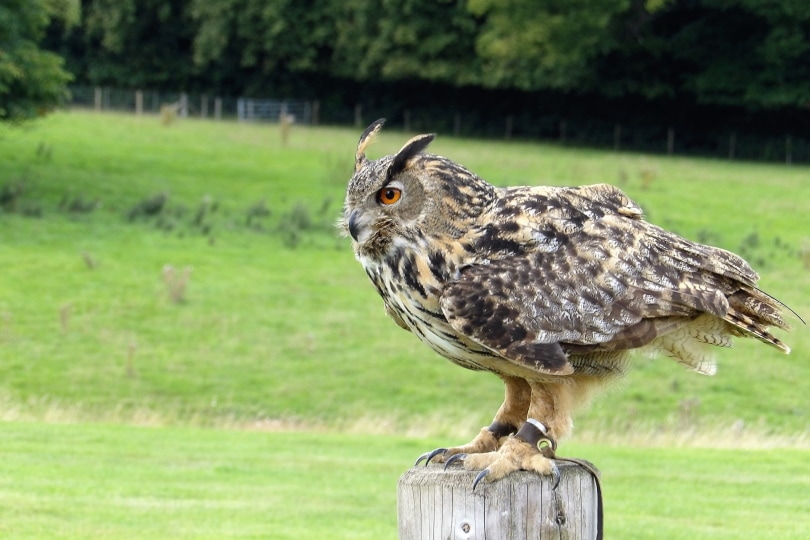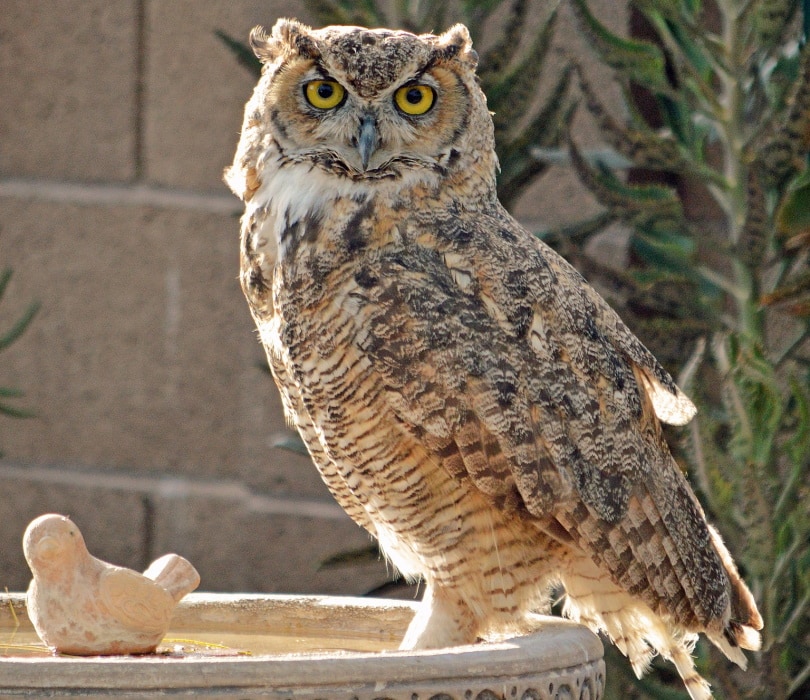Why Do Owls Bob Their Heads? 6 Reasons for This Behavior
Last Updated on

Owls are some of the most fascinating birds on earth. They have always captured the human imagination with their mysterious, silent flight and unusual behavior. One of the more curious behaviors that they engage in is bobbing their heads up and down.
Often, this head-bobbing motion is associated with the effort to keep themselves awake. But it actually might serve a much more critical function than just staying alert. So, why do owls bob their heads up and down?
Below are 6 reasons for this behavior.
The 6 Reasons Owls Bob Their Heads
1. Survival and Hunting Mechanism
Owls are predatory birds in the Strigiform order of raptors. They depend on their acute vision, sharp curved beaks, and hearing ability. They are also nocturnal predators, which means that they hunt primarily at night and sleep during the day.
For that reason, they have evolved to have big eyes, which allow them to see well in the dark. However, with such big eyes, the bird can hardly rotate them in the eye socket. Furthermore, they aren’t entirely spherical, which means they cannot move to look around as humans do.
They have a higher concentration of rod cells which are light-sensitive than cones. Rod cells are peripheral vision receptors that provide a wide-angle view.
That means that the owls have exceptional alertness even for the slightest movements. They use this sensory adaptation to spot tiny mammals hiding in tall grass or open fields.
For that reason, the owls lose the ability to move the eyes around the eyes as humans do. They also lose the ability to manually focus and rely on their head movement as a distance-perception tool. You can imagine that this is where the bobbing of heads becomes helpful.

2. Better Vision
To survive, owls have to bob their heads up and down in order to get a clear picture of what’s around them. It is also a way to resolve distance and estimate the exact position of prey. After triangulating the prey’s location, the bird can swoop down like a stealth bomber and catch its meal.
Another thing to note is that the head bobbing is more dramatic and vigorous in juvenile owls. In the early stages, they move their heads more erratically and energetically.
As they become more experienced and mature, those head movements get refined and subtle. This idea could support that head bobbing is especially helpful to young owls as they learn perceptual awareness.
3. To Orient Themselves in Space
Another reason why owls bob their heads is to orient themselves around the space they live. They could twist their necks by rotating them, but that would be time-consuming and not as accurate as head bobs. By moving their heads up and down, owls ensure their surroundings are at all times within range of vision.
It also makes it easy for them to land and take off. That’s because bobbing the heads allows them to quickly judge how far or near a branch is from them. For that reason, an owl’s eyes are on either side of its face to allow for better triangulation of objects’ location.
The head bobbing also gives them balance and agility while skipping from one tree branch to another. Moreover, as they move around their space, they keep track of everything by repeatedly bobbing their heads.

4. As a Way to Communicate With Other Owls
Owls are social creatures. In some species, it’s common to find mothers to young ones together in the same nest. They often stay together to hunt and raise their young.
Owls use a number of different vocalizations to communicate with other owls, including barking, whining, screeching, and hooting. It includes head bobbing as well. In fact, it can be so intense that sometimes the bird seems to have a fit.
Head bobbing is not only helpful for the two aforementioned reasons, but it also serves as an indicator to other owls about danger or food sources. When one owl spots prey, it will often bob its head down at the same time. It could signal other birds in their vicinity that there’s a meal waiting.
Owl head bobbing can also indicate aggression or hostility from a potential predator. When another bird senses the head movement, it will often spread its wings and raise its tail to appear much bigger or more threatening. In some cases, they may even screech at the threat in an attempt to ward them off.
5. Better Hearing
The act of head-bobbing also helps an owl concentrate on the sounds its prey makes, allowing it to track them more easily while hunting in dark or cluttered areas like the forest floor.
Owls are able to pinpoint the direction of the sound with great accuracy. They can do this by swiveling their heads to differentiate the different sounds and identify the direction of the prey.
For example, if the sound of the prey was on the right, it could reach the right ear before the left one. To precisely tell the direction of the animal, it bobs its head.
Owls have asymmetrical ears. One of the ears is higher than the other one, which means one ear can gather sounds from a specific direction before the other one. The owl moves its head, so both ears get to listen to a sound at an equal time, and it gets ‘triangulated’ into a particular position in space.

6. To Keep their Necks Flexible
Another reason why owls bob their heads is to keep their necks flexible. They have adaptive 14 vertebrates that allow them to rotate their necks up to 270 degrees. This adaptation gives them the ability to look in all directions without moving their shoulders.
The head bobbing is part of the method in which they keep their necks loose and flexible. It allows them to quickly orient themselves around their surroundings without moving a single muscle on their body.
The bobbing is especially crucial for baby owls as it helps them learn about their external environment when still too young to fly. It also helps relax their neck muscles.
Head-bobbing can help regulate blood flow in an owl’s neck, which may prevent muscle fatigue. An owl often bobbles its head while it’s roosting or at rest. This action also helps relieve the muscles in the back of its neck.
The neck rotation ability becomes more efficient with a blood-pooling system. The system collects enough blood to power the eyes and brain when the neck rotation cuts blood circulation.

In Conclusion
Couple these sharp vision with powerful beaks and talons, plus the silent flying ability, and you got yourself, one formidable predator. While the head-bobbing may seem goofy, it’s actually a strategy that makes them efficient hunters.
Remember, this mechanism is not unique to owls only. Other birds of prey like hawks and falcons also bob their heads.
Featured Image Credit: LoneWombatMedia, Pixabay
About the Author Robert Sparks
Robert’s obsession with all things optical started early in life, when his optician father would bring home prototypes for Robert to play with. Nowadays, Robert is dedicated to helping others find the right optics for their needs. His hobbies include astronomy, astrophysics, and model building. Originally from Newark, NJ, he resides in Santa Fe, New Mexico, where the nighttime skies are filled with glittering stars.
Related Articles:
How to Clean a Refractor Telescope: Step-by-Step Guide
How to Clean a Telescope Eyepiece: Step-by-Step Guide
How to Clean a Rifle Scope: 8 Expert Tips
Monocular vs Telescope: Differences Explained (With Pictures)
What Is a Monocular Used For? 8 Common Functions
How to Clean a Telescope Mirror: 8 Expert Tips
Brightfield vs Phase Contrast Microscopy: The Differences Explained
SkyCamHD Drone Review: Pros, Cons, FAQ, & Verdict
